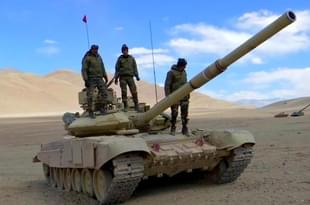News Brief
Before Indian Troops Captured Heights On Kailash Range In Ladakh, Army Was Asked To Be Ready For Offensive Operation In East: Report
Swarajya Staff
Apr 20, 2021, 12:00 PM | Updated 12:08 PM IST
Save & read from anywhere!
Bookmark stories for easy access on any device or the Swarajya app.


Before troops from the Indian Army and the Special Frontier Force started capturing the tactically important heights of the Kailash Range in Ladakh, south of Pangong Tso, the Eastern Command was asked to be ready for offensive operation against China in the eastern sector, a report in the Indian Express says.
Although the army wanted to keep the conflict with China localised to the Ladakh sector, it considered the option of a counter-thrust against the People’s Liberation Army (PLA) in the east to relieve pressure in Ladakh, if the need arose.
According to a source quoted in the Indian Express report, the Eastern Command was told to “take measures first to augment...defensive capability, and then be ready to go launch (an offensive) to relieve pressure in the area of Ladakh”.
The source says that the Indian Army also pushed in more troops in the Middle Sector to augment it defences as it wanted to deter the Chinese.
While Himachal and Uttarakhand form the Middle Sector of the boundary with China, the Eastern Sector stretches from Sikkim to Arunachal Pradesh.
The Indian Express source also reveals that the “quid pro quo operation” against China, which took place in August 2020, over three months after the military standoff began, could have taken place “much before” but got delayed.
Discussions on countering China in Ladakh began soon after the standoff in eastern Ladakh was reported. Additional troops were brought in, the source says, adding that the process took some time as the forces had to be acclimatised.
Given that India and China were locked in a standoff at multiple places in eastern Ladakh, the army headquarters was given presentations on all the possible locations where an operation could be launched against the Chinese.
In June, Indian and Chinese troops clashed in the Galwan Valley, one of the areas in eastern Ladakh where they were locked in a standoff.
The decision to occupy heights on the Kailash Range was taken by the China Study Group towards the end of August. The final decision for the operation was made only on 29 August and troops started moving the same evening.
On the intervening night of 29 and 30 August, Indian troops captured tactically important heights on the Kailash Range, putting the PLA at a disadvantageous position for the first time since the beginning of the conflict.
Small arms and rocket launchers were fired as warning shots.





